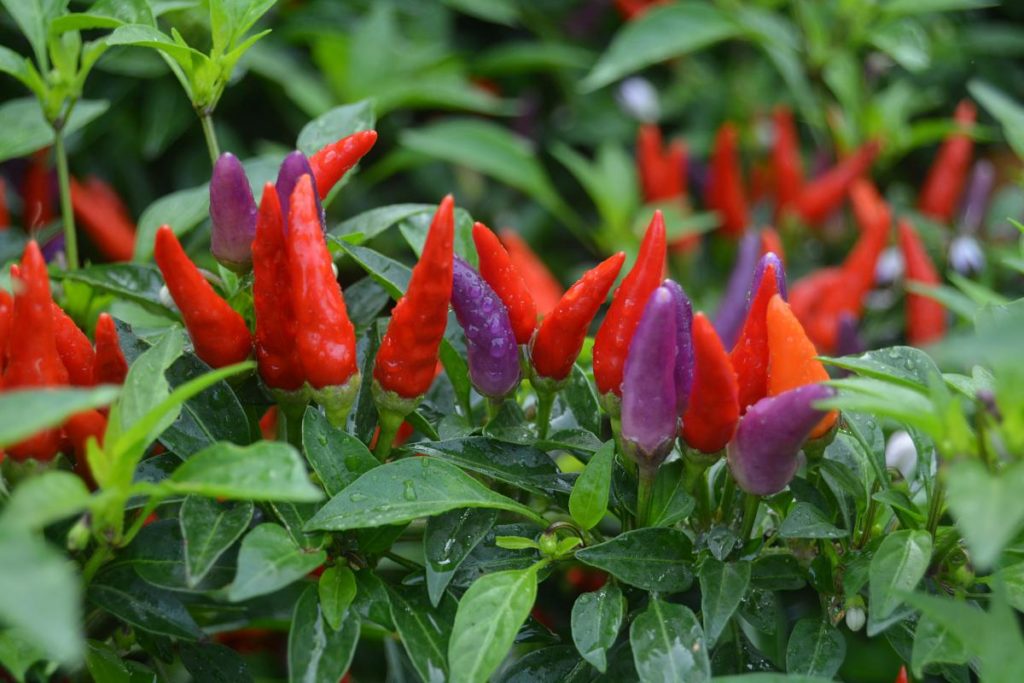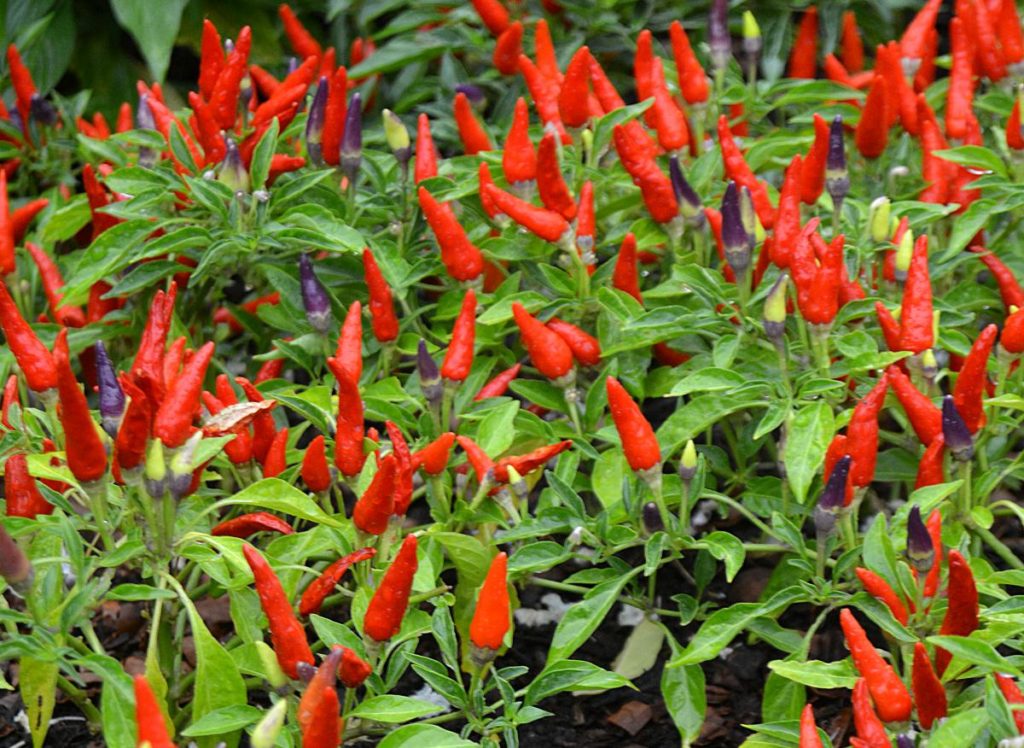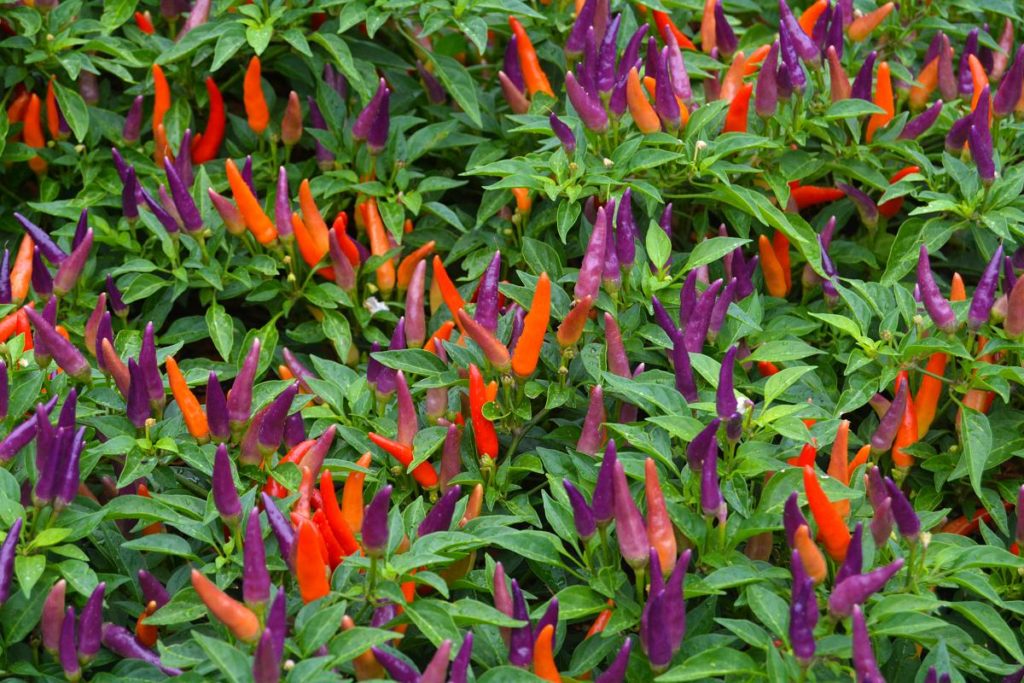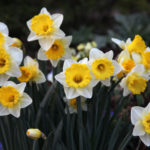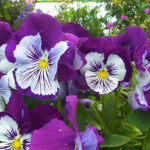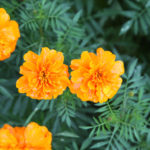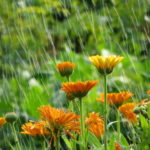Hot Topic: Peppers
I can’t help but like peppers, and I think most people feel this way. They come in so many shape, sizes, colors and flavors. I was recently asked by a reporter to describe peppers and I responded that they are the “fun” vegetable. I think I like to grow them more for how they look than for the actual harvest.
Don’t get me wrong. We would sorely miss peppers in our cuisine. They are such a vital ingredient in so many types of dishes from so many cultures around the world.
History
You might not know that the world did not have peppers centuries ago. They were native just to the Americas. When western explorers arrived in Central and South America, they took back seed from this interesting new plant, with its bright colored fruit and hot flavor.

Evidence for the origin of domesticated peppers in Mexico. Source: PNAS.org
From there the plant spread around the world. The Portuguese brought peppers to Asia through their trade routes during the 16th Century. Today, India is the world’s largest producer, consumer and exporter of chili peppers.
The words pepper and chili are interchangeable with the fruit sometimes referred to as chili peppers. European explorers gave the fruit this name, because the hot flavor reminded them of a spice they knew, black pepper, which comes from Piper nigrum.
Types of Peppers
There are five cultivated species of chili peppers: Capsicum annuum, which includes bell peppers, wax, cayenne and jalapeños. Capsicum frutescens, which includes Tabasco and Thai peppers. Capsicum chinense, which includes the very hot peppers like habanero and Scotch bonnet. Capsicum pubescens, which include the South American rocoto peppers. And Capsicum baccatum, which includes the South American aji peppers. These species all have fruits of varying levels of “heat,” from basically zero to off the charts.
How “Hot” Are They? The Scoville Scale
Peppers’ heat is created by a substance known as capsaicin. This is the primary component in pepper spray. When consumed, capsaicinoids bind with pain receptors on the tongue and in the throat and trigger in the brain the feeling that there is something hot in your mouth. The heat level in peppers is measured in Scoville heat units. Pharmacist Wilbur Scoville invented this method of measuring the amount and concentration of capsaicin in peppers. Bell peppers are at zero on the scale; Jalapeños at 2500-10,000; habaneras at 100,000-350,000; and near the top, Carolina Reapers comes in at a scary 1.6 to 2.2 million units.
While peppers are a staple culinary item around the world, they have become quite popular as a warm season ornamental bedding plant. They are a great addition to our display beds here at the Dallas Arboretum, especially during our long warm summers. And they also put on a great show during autumn.
Some of my favorite cultivars are: “Chilly chili,” a compact that will stay around 12 inches tall and wide with a solid set of green to red fruit on the top of the plant; “Black Pearl,” an All-American Selections (AAS) award winner from 2006 that has compact, purple-black foliage with multiple oval, black fruit on the tips of each stem; “Basket of Fire” is a very compact rounded plant that is covered in small chilies that start light yellow and ripen to bright red. This one is great in containers.
You can see peppers like these at the Dallas Arboretum, including many of these and other varieties that we are currently testing in the trial gardens. Now is a good time to start thinking about where you might plant these beauties in your yard next spring. Please feel free to stop any of our horticulture staff to ask about peppers on your next visit, or send us a message on social media and ask for me personally!
Dave Forehand
Vice President of Gardens
Dallas Arboretum
Related Posts
Comments are closed.


